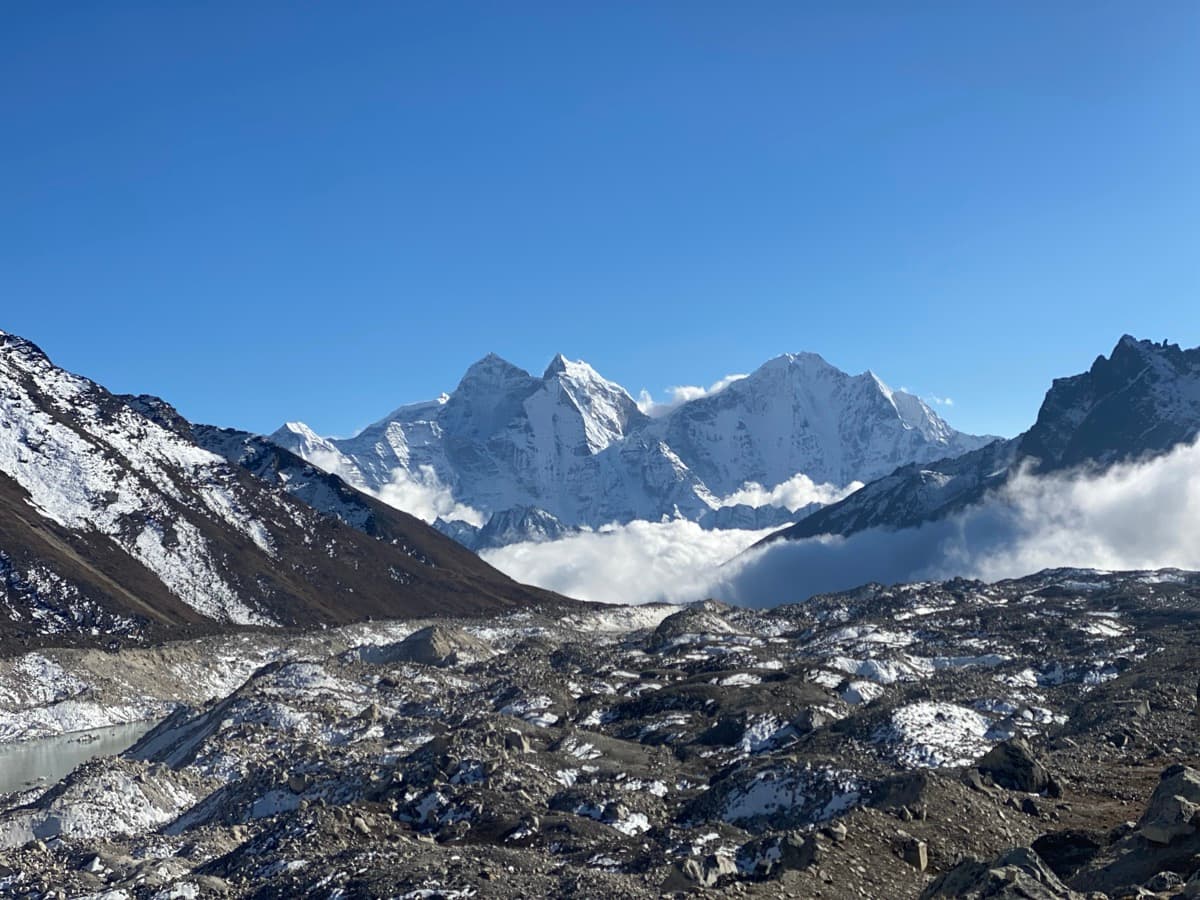Nepal, the world's most renowned country for trekking and natural beauty. Eight national peaks of the world's first fourteen highest mountains, including the highest one, the legendary Mount Everest, and UNESCO World Heritage Sites in Nepal. Varan landscapes, giant Himalayas, rich biodiversity, and rich cultural heritage are among the reasons that make Nepal the world's most popular trekking paradise. Trekking in Nepal offers a lifetime opportunity to tourists from around the world.
If you aspire to ascend the world's highest base camp, the Everest Base Camp, or explore the forbidden land of Nepal, the Upper Mustang, or the tranquil beauty of Langtang, or venture into the city of lakes, Pokhara, you will find something for all sorts of travelers in Nepal.
Before visiting Nepal, you should be aware of the following things in detail.
When to Explore Nepal
Choosing the best time to trek in Nepal is extremely crucial. Every season is the best to travel to Nepal, yet while trekking in the Himalayas, two seasons are best to trek, i.e., spring and autumn.
The following is an elaborate analysis to make the correct choice for your trek:
Spring (March to May)
The spring season is the most favorite trekking season in Nepal. During spring, the atmosphere is warm, crisp, and clear with very fine views of the green hills and white Himalayas. Rhododendrons and wildflowers paint the forest pink, white, and red, which covers the hills. Trekkers have stunning views of the great Himalayas from a faraway place.
The spring season is the optimum time for trekking in Everest, Annapurna, Langtang, Manaslu, Ghorepani Poon Hill, and other trekking destinations. Due to the optimum time for trekking, the trekking route is full, and it can even be extremely expensive.
Autumn (September to November)
Autumn is the ideal time to trek in Nepal. As the monsoon recedes, the weather clears and offers clear, peaceful, and crystal-clear weather, and trekkers are gifted with one of the finest Himalayan white snow mountain vistas. Autumn is comfortable in terms of temperature, and the trail is free from wetness; autumn is the driest season to trek.
It is the high season, and the trail is very crowded; hence, pre-booking of flights, hotels, and permits is advisable. Most of the trekkers trek in Everest, Annapurna, Gokyo Lakes and Chola Pass, Tsum Valley and Manaslu Circuit, and Upper Mustang. There are some other trekking trails, such as Mardi Himal, Langtang, etc., which are very crowded this season.
But monsoon and winter are ruled out for Nepal Himalayas trekking. Monsoons are followed by intense rainfall, leeches, slippery trails, and landslides in hills. It offers very good views of the Himalayas after a heavy rain. Trekkers can trek to Upper Mustang, Nar Phu Valley, or Lower Dolpo, which is a rain-shadow area of Nepal and is dry even during monsoon.
Where to Go
Everest Region
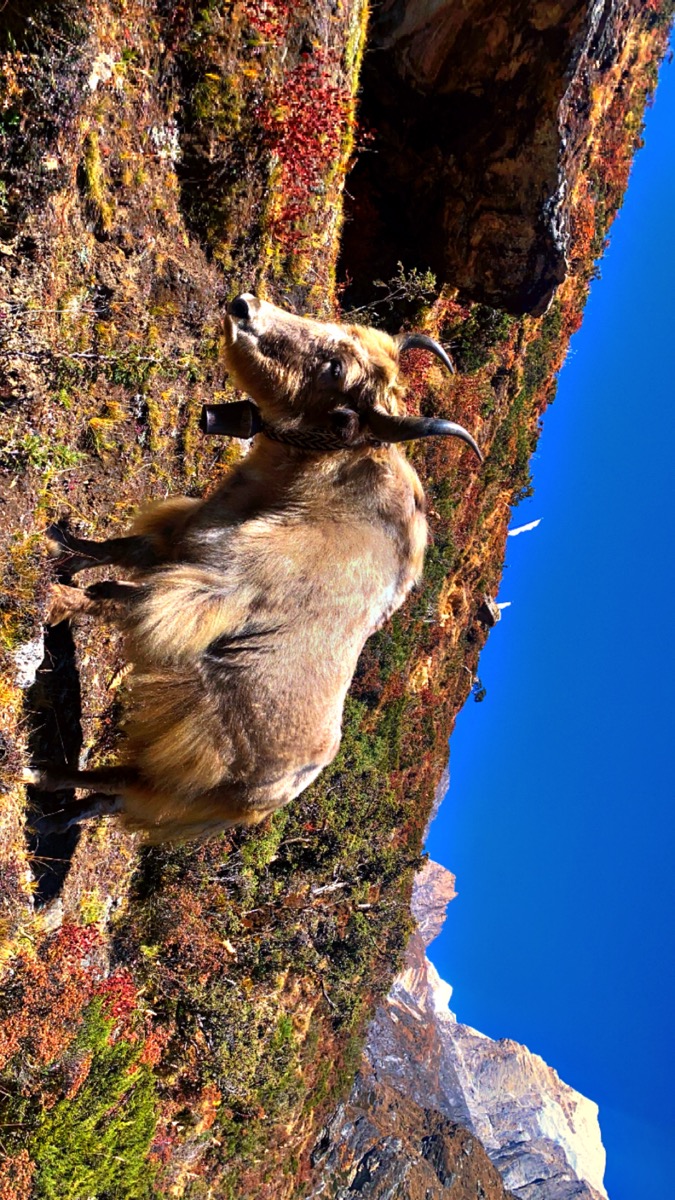
The Everest Region is the most loved trekking destination in Nepal. It lies within the Solukhumbu district. Everest is the most renowned destination in Nepal. It takes a brief flying tour over the green hills, fields, and gigantic mountains from Kathmandu to Lukla. See the scenery from above. Trekking for hours over several suspension bridges, crossing glacial rivers, and ancient Buddhist monasteries, the diverse landscapes are a sign of the beauty of the Khumbu region. Passing through several Sherpa villages gives a cultural immersion in the daily livelihood of the rural Nepalese people.
● Popular Trek: Everest Base Camp (EBC) Trek
● Alternative Routes: Gokyo Lakes Trek, Everest Panorama Trek, Pikey Peak Trek
● Highlights: Panoramic views of Mt. Everest, Lhotse, Nuptse, and Ama Dablam; Namche Bazaar (Sherpa capital); Tengboche Monastery; and Khumbu Glacier.
● Highest Altitude: 5,500 meters
● Access: 30–40 minute flight from Kathmandu to Lukla
To witness the grandeur of the world’s tallest mountain, immerse yourself in Sherpa culture, and walk trails trodden by legends like Tenzing Norgay and Sir Edmund Hillary, you should trek in the Everest region once in your lifetime.
Annapurna Region
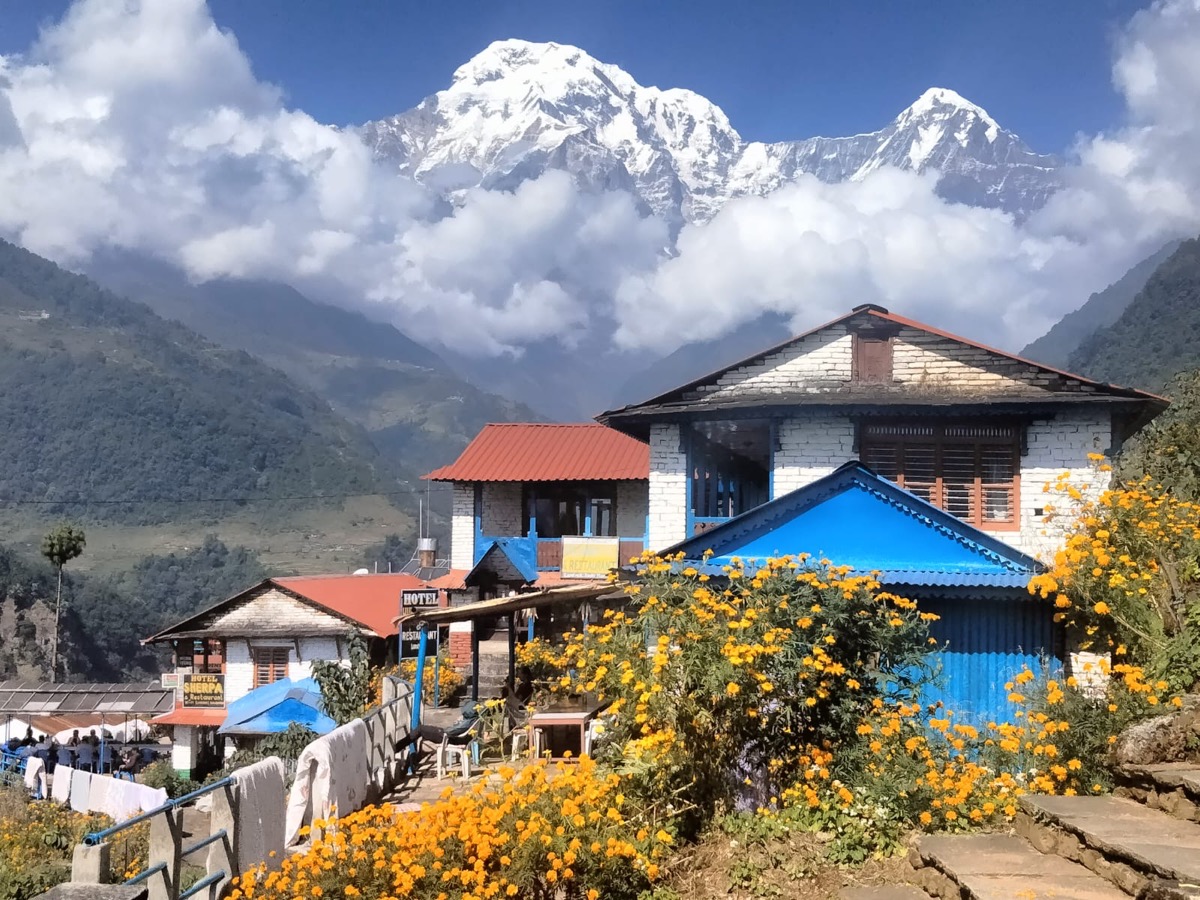
Nepal's Annapurna region is also the favorite trekking destination among trekkers from around the world.
It is Nepal's most diverse and most popular region. Everest Base Camp is not so tough, but then there are some fantastic scenes of nature and heavenly views of the Himalayas' white peaks. It ranges from subtropical jungle and rice-field terraces to high-altitude deserts and glacial lakes. It has everything. Treks here offer close cultural exposure with the Gurung, Magar, and Thakali communities.
Popular Treks: Annapurna Circuit Trek, Annapurna Base Camp (ABC) Trek , Ghorepani Poon Hill Trek
Alternative Routes: Mardi Himal Trek, Khopra Ridge Trek
Highlights: Thorong La Pass (5,416 m), Poon Hill sunrise, Machapuchare and Annapurna massif, natural hot springs, and cultural villages.
Highest Altitude: 5,416 m
Access: Drive or fly from Kathmandu to Pokhara
Ideal for trekkers seeking scenic variety, teahouse comfort, moderate challenge, and rich cultural experiences—all within one region.
Langtang Region
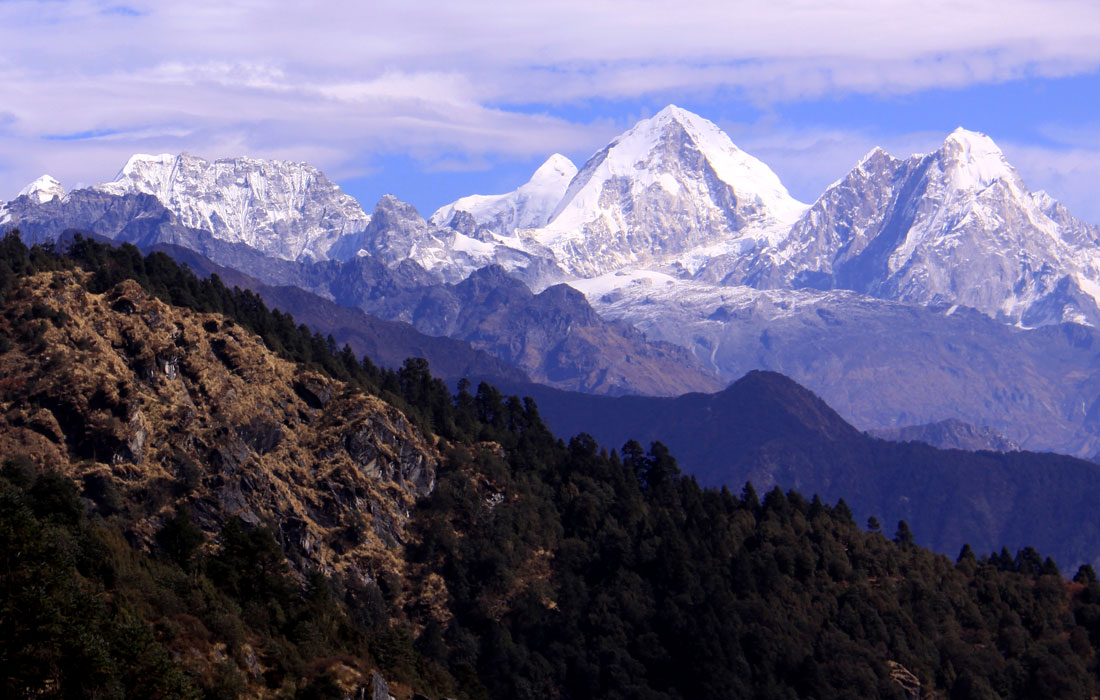
The Langtang region is close to Kathmandu City and offers the stunning beauty of the Tamang culture and diverse landscapes. It offers an authentic trekking experience. Though affected by the 2015 earthquake, the region has rebounded and welcomes trekkers warmly. It combines stunning alpine scenery with Tamang culture, yak pastures, and sacred lakes.
Popular Trek: Langtang Valley Trek
Extensions: Langtang Gosaikunda Lake, Helambu Trek, Tamang Heritage Trail
Highlights: Langtang Lirung (7,227 m), yak cheese factory at Kyanjin Gompa, rhododendron forests, sacred Gosaikunda lakes
Highest Altitude: 5,500 m
Access: 6–7 hour drive from Kathmandu to Syabrubesi
A shorter, less crowded alternative to Everest or Annapurna, great for nature lovers and cultural explorers, Langtang is perfect for beginner trekkers.
Manaslu Region
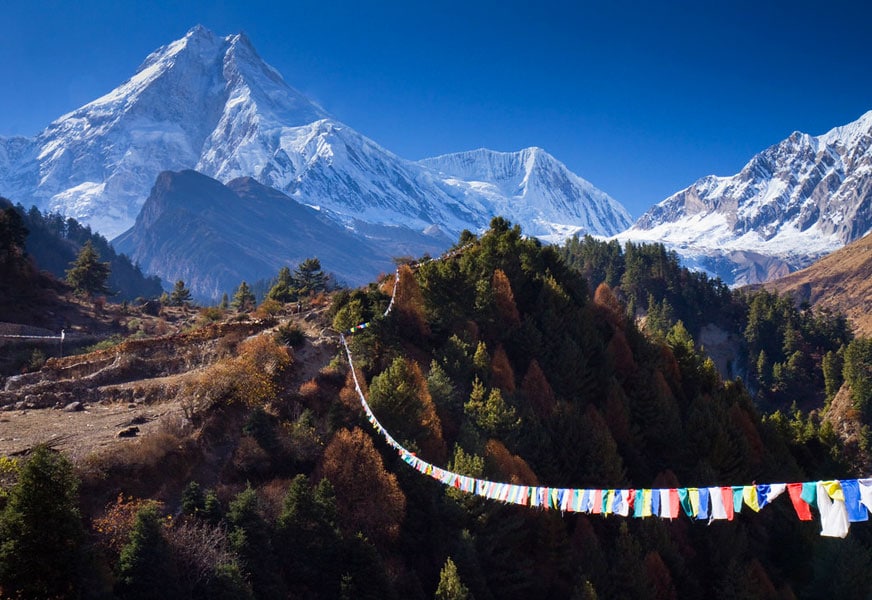
Experiencing off-the-beaten-path trekking, Manaslu offers the stunning beauty of the Himalayas and remote villages of rural Nepal. This region is less traveled than Everest and Annapurna but offers dramatic Himalayan views. Circling the world’s 8th-highest peak, the trail weaves through Tibetan-influenced villages and pristine valleys, ending with a thrilling crossing of Larkya La Pass (5,160 m).
Popular Trek: Manaslu Circuit Trek
Alternative Routes: Tsum Valley Trek
Permit: Restricted Area Permit + Guide required
Highlights: Tsum Valley (optional add-on), suspension bridges, remote monasteries, Himalayan panoramas
Highest Altitude: 5,160 m
Access: Drive from Kathmandu to Machha Khola
Upper Mustang
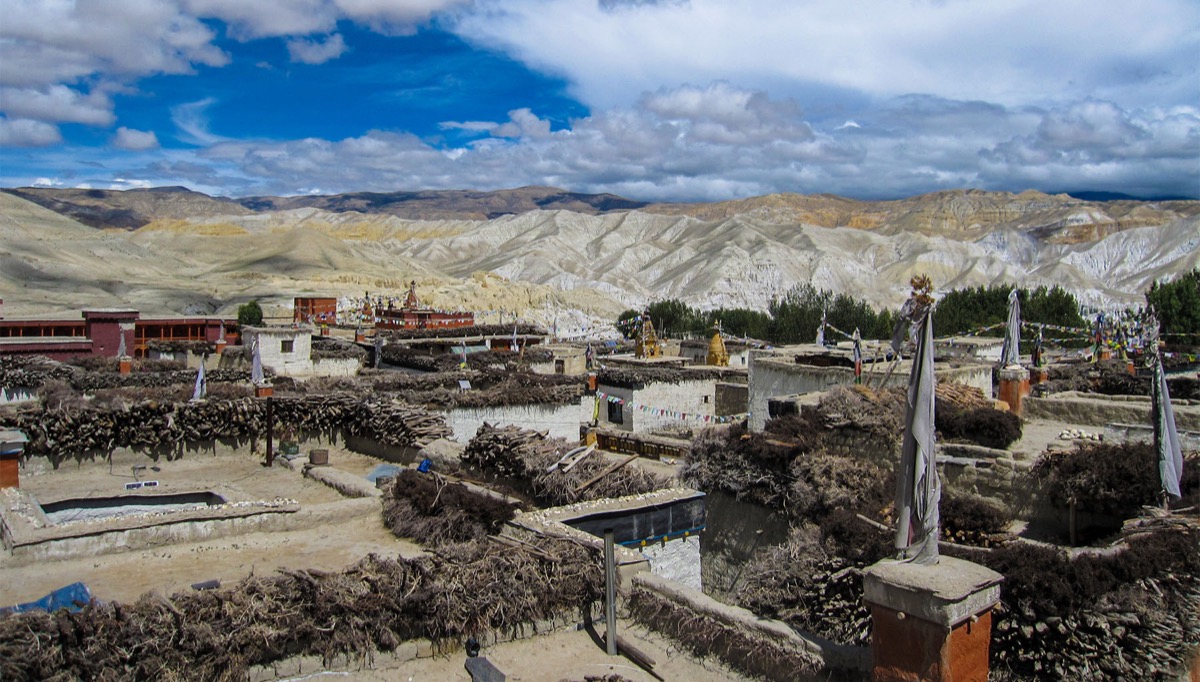
Trekking into the Last Forbidden Kingdom, Upper Mustang is a desert highland country in deep Tibetan Buddhism. More Tibetan than Nepalese, it has medieval walled towns, cave monasteries, and wind-blown cliffs.
● Popular Trek: Upper Mustang Trek
● Permit: Special Restricted Area Permit required (~$500 for 10 days)
● Highlights: Lo Manthang royal city, sky caves of Chhoser, barren canyons, colorful festivals like Tiji, ancient monasteries
● Highest Altitude: 3,950 m
● Access: Flight/drive to Jomsom via Pokhara, then trek or 4WD
For trekkers seeking a culture-filled experience, the deserts of the Himalayan landscape are not found elsewhere in Nepal. The summer months are best when most trails are dry.
Types of Trekking
Teahouse Trekking
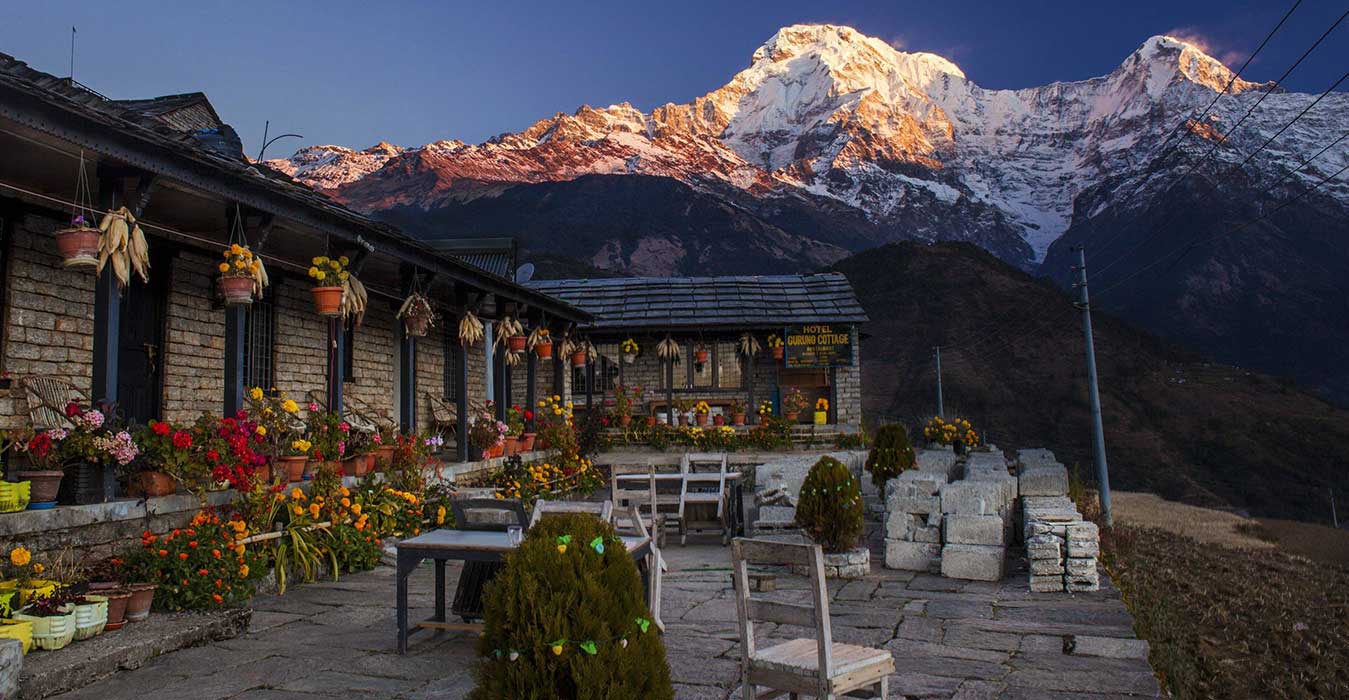
Teahouse trekking is the most common, convenient, and modern way to explore Nepal’s high-altitude region trails. Teahouses are small, locally run, and offer very basic facilities, but they offer very warm hospitality to the trekkers. The teahouse offers basic food with comfortable accommodation facilities.
You do not need to carry a tent or food while trekking in Nepal. If you are a solo traveler or a small group of people, the teahouse will be best for you. At a low cost, you get all the basic facilities with a warm gesture. The popular teahouse treks are Everest Base Camp, Annapurna Circuit and Base Camp, Langtang Valley, Ghorepani Poon Hill Trek, and others. Teahouse trekking is perfect for those who seek comfort and budget-friendly options and for first-time trekkers.
Camping Trekking
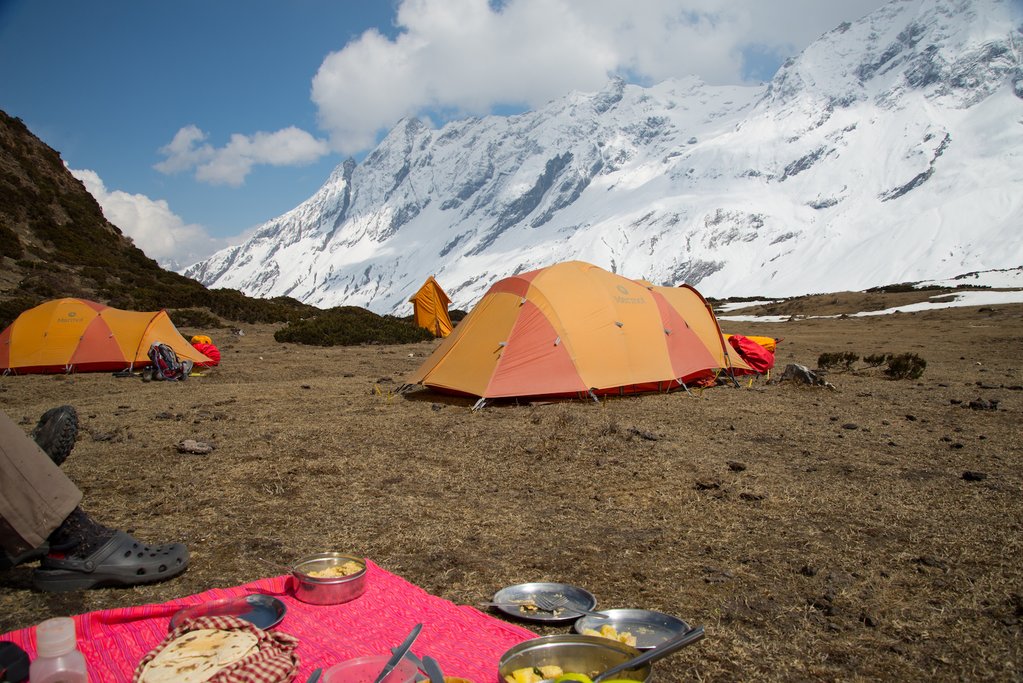
Camping treks add some element of fun and adventure to high-altitude trekking. Where there are fewer or no teahouses available in the region, there exists a camping trek is conducted. It is an authentic and interactive experience, allowing the trekkers to feel in touch with nature.
To go for a camping trek, one has to carry a tent, provisions, cooking equipment, staff, and a porter. Your travel agency can arrange everything one would require for camping and trekking in Nepal. In a camping trek, the food is cooked by the crew member, and a camping trek provides a raw experience of Mother Nature.
The common camping treks in Nepal are Upper Dolpo, Dhaulagiri Circuit, Kanchenjunga Base Camp, Makalu Base Camp, and Great Himalayan Trails. A camping trek is perfect for those who seek adventure and wilderness.
Luxury Trekking
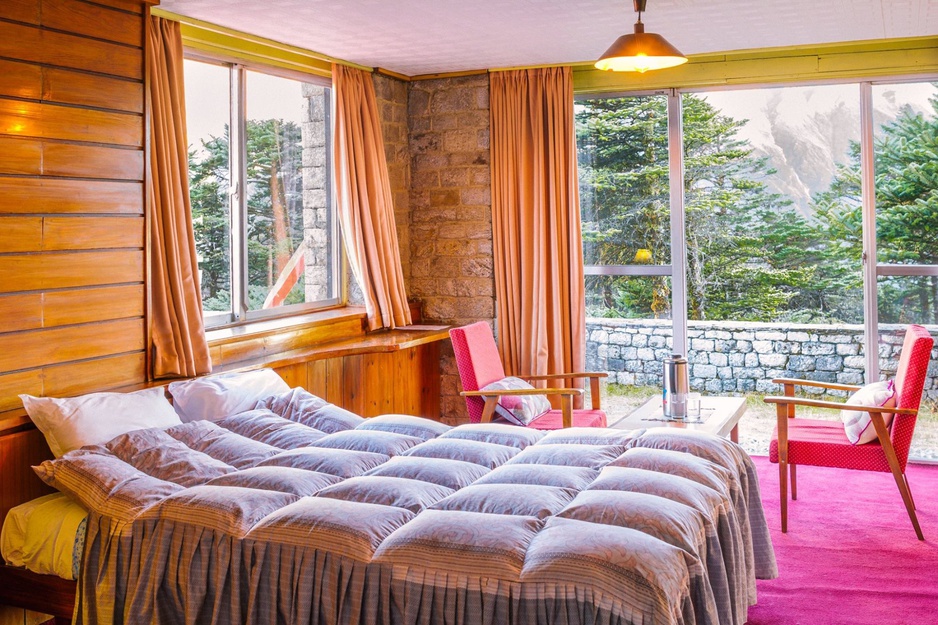
Luxury trekking is suited for people who yearn for adventure and convenience. Luxury trekking is a combination of the untamed beauty of the Himalayas with luxury comfort lodges and meals. Unlike teahouse trekking, luxury trekking offers neatly organized and facilitated accommodation and meals, customized itineraries, and services like private rooms, hot showers, and internet.
The luxury treks are Everest Base Camp Luxury Trek, Annapurna Luxury Trek, Nepal Luxury Tour, etc. The trek is most suitable for couples, older trekkers, and trekkers who love comfort.
Guided Trekking
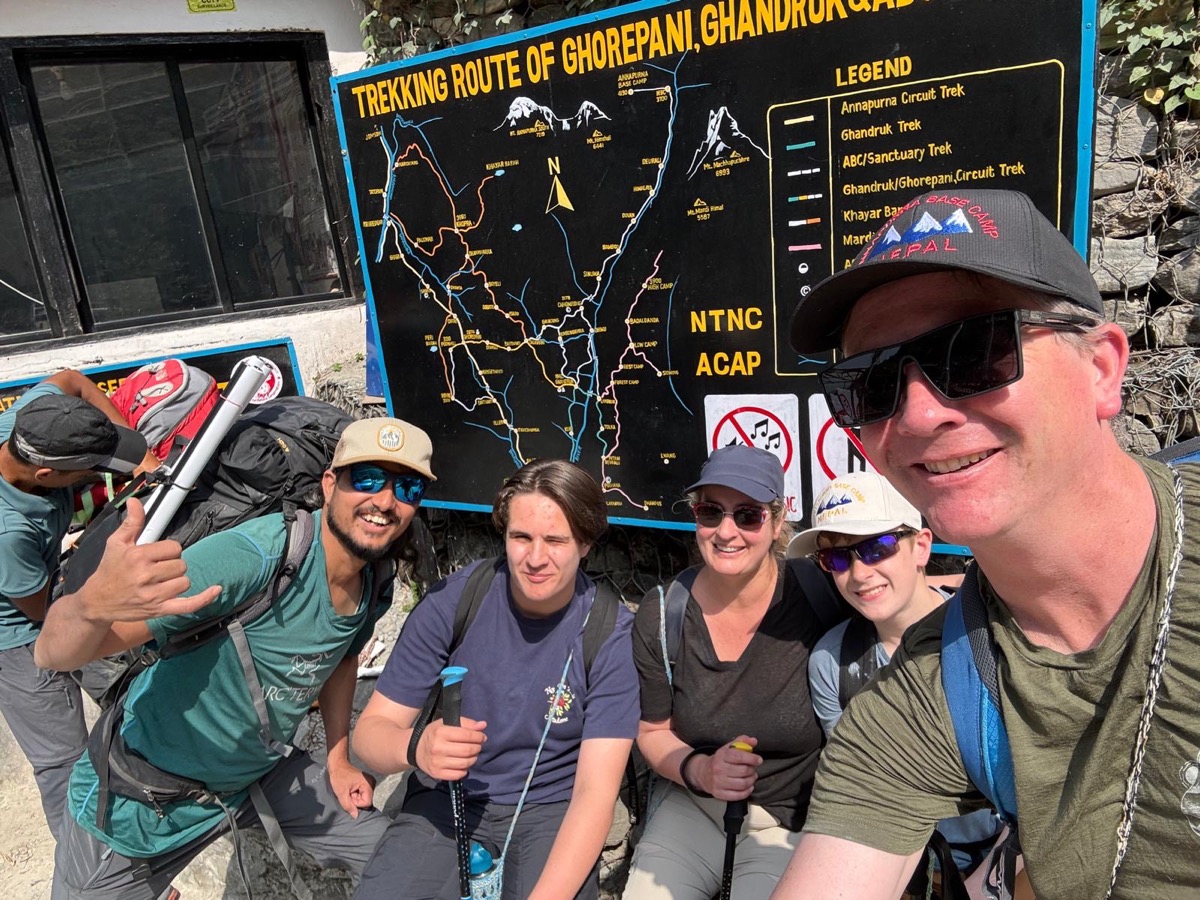
Guided trekking involves a professional trekking guide who ensures permit booking, language interpretation, altitude and safety instructions, and route navigation. A guided trek alleviates the tension of your trek and lets you learn about the culture, flora, and fauna.
In the case of beginners and solo trekkers, and trekking in restricted or high-altitude areas, e.g., Upper Mustang, Manaslu, Tsum Valley, Kanchenjunga, and Nar Phu Valley, a guide is unavoidable.
Independent Trekking
Independent trekking is self-organized trekking. Experienced trekkers who wish to have full independence and unguided trekking plan their trek according to their choice. Independent trekking offers a more personal and spontaneous journey on a low budget.
Fly-in/Fly-out or Drive Trekking
Make trekking short by flying to the destination and coming back following the same steps. Or you can choose to drive to explore Nepal’s beauty. This trek saves your time, but it’ll cost quite a lot more than other types of trekking.
● Fly to Lukla (Everest) or Jomsom (Annapurna/Upper Mustang).
● Drive to Syabrubesi (Langtang), Soti Khola (Manaslu), or Pokhara (ABC).
Permits and Regulations
● For Everest region trekking, trekkers need to have a Sagarmatha National Park and Khumbu Pasang Lhamu Rural Municipality permit.
● For the Annapurna region, you need to have an Annapurna Conservation Area Permit (ACAP).
● For the Langtang Region, you need to have a Langtang National Park Permit and Trekkers’ Information Management System (TIMS).
● For the Manaslu Region, the Manaslu Restricted Area Permit, Manaslu Conservation Area Permit, and Annapurna Conservation Area Permit are required. Also, you need to hire a guide.
● For Upper Mustang, you will require a Restricted Area Permit and an Annapurna Conservation Area Permit, and a guide is mandatory.
Note: For visiting Kathmandu's UNESCO Heritage Sites, you will need to give some money.
Travel Insurance and Emergency Service
It is necessary to purchase travel insurance while trekking in Nepal's high-altitude regions. At heights above 3,000 meters, trekkers may suffer from altitude sickness and may face some other problems like tiredness, food poisoning, and difficulty climbing the tall hills. In such a case, all your costs, including helicopter evacuation and medical care, are taken care of by your insurance.
Your travel insurance must cover the following things:
● High-Altitude Trekking Coverage
● Medical Expenses
● Emergency Helicopter Evacuation
● Trip Cancellation
Emergency Services
Helicopter Rescue in Nepal
● Common on routes like Everest, Annapurna, Manaslu, and Langtang.
● Arranged via:
○ Trekking agency
○ Insurance company (local contact or direct call)
○ Local rescue volunteers or health posts
● Evacuated trekkers are taken to Kathmandu or Pokhara hospitals.
Accommodation and Food on the Trail
During trekking in Nepal, you will be provided with a local teahouse or lodge run by a community. The accommodation that you will get is very primitive but cozy. The teahouse usually offers twin-sharing rooms with shared toilets. No hot shower facility or internet services will be available. They do offer you a wooden bed and mattress, and warm blankets.
If you want additional comfort and additional facilities in lodges/hotels, you can spend additional money. If you prefer camping treks, always carry a tent, cooking utensils, and all other things that you need for camping. Camping can be experienced in Upper Dolpo, Kanchenjunga, Makalu Base Camp, and other high-altitude places.
In city areas like Kathmandu and Pokhara, the trekkers stay in 3- and 5-star hotels, where they get every facility of the modern age.
The food variety is plenty in the city, but for a high-altitude region during trekking, there won't be much variety, but that food is locally grown, so you will have fresh food. You will have dal bhat, that is, a rice and lentil dish, seasoned vegetables, and pickle. It's healthy, wholesome, and perfect for trekkers.
For breakfast, they will serve options like Tibetan bread, chapati, porridge, eggs, pancakes, tea, or coffee.
For lunch and dinner, dal bhat, fried rice, noodles, pasta, momo, or any food that is found at their place is served.
For snacks, popcorn, biscuits, boiled eggs, chocolates, garlic soup, and other things are available at the teahouse.
Always carry chocolate bars and other items of food for yourself while trekking.
Drink lots of water while trekking in the Nepalese highlands. Carry a refillable water bottle and refill your water bottle at the teahouse.
Trekking Difficulty
Nepal has a diversified terrain. Sometimes you are walking in terraced fields, sometimes in high hills, and sometimes you are descending. The uphill and downhill make your trek difficult, and you have to maintain your pace.
Here is the list of treks from easy to moderate to challenging and technical in Nepal, which offers adventure and thrill in your trek.
Easy Treks
The short treks are suitable for beginners, families, and older trekkers who want to trek in Nepal. The highest altitude of short treks is less than 3,000 meters, which is comforting, and the stunning natural scenery.
Some popular easy treks are
Moderate Treks
The moderate trek involves 5–7 hours of walking each day and may include some steep ascent and descent. It is appropriate for regular trekkers with average physical condition. The maximum altitude is up to 4,000 meters, and you trek through suspension bridges and rough terrain. The trek passes through thick forest and a couple of villages and offers mountain views in the distance. A moderate trek does not demand technical skills, but plenty of physical stamina is useful.
Some popular moderate treks
Challenging Treks
The challenging treks demand good physical fitness, proper acclimatization days, and sound knowledge about trekking. Trek across high passes and alpine terrain and remote trails, and the temperature is cold, and the air is thin; the risk of altitude sickness is quite high. Walk 6–8 hours a day on steep trails and high-altitude exposure. These treks are more demanding, typically going to elevations over 5,000 meters.
Some popular challenging treks are
Altitude Sickness and Safety Tips
If the body does not acclimate well to a high-altitude region, the change in altitude affects your breathing and causes nausea and vomiting, dizziness, and cyanosis. It causes altitude sickness. Having an idea of how altitude affects your body, early detection of its symptoms, and taking necessary precautions are most critical for a safe and successful trek.
Types of altitude-related illness
➔ Acute Mountain Sickness (AMS)
Symptoms: headache, nausea, dizziness, loss of appetite, fatigue, disturbed sleep
➔ High Altitude Pulmonary Edema (HAPE)
Symptoms: breathlessness at rest, coughing, chest tightness, blue lips/fingers
➔ High Altitude Cerebral Edema (HACE)
Symptoms: confusion, loss of coordination, hallucinations, coma
Note: HAPE and HACE are medical emergencies—descend immediately and seek treatment.
Safety Tips
● Acclimatize Properly
● Hydrate Yourself
● Listen to Your Body
● Ascend Slowly
● Eat Enough Nutritious Foods
● Consider Preventive Medication
● Go With an Experienced Guide
What to Pack

Packing essentials are needed while trekking in Nepal. Here is the list of items that trekkers should pack.
● Trekking Boots
● Camp shoes or sandals
● Trekking Poles
● Trekking Backpack
● Trekking Trouser
● Thermal Tops
● Thermal leggings or long underwear
● Duffel Bag
● Fleece Jacket
● Windproof and Waterproof Jacket
● Windproof and Waterproof Pants
● Down Jacket
● Sleeping Bag
● Sunglasses
● Sun Hat
● Warm Gloves
● Sunscreen
● Water Purification Tablets
● Water Bottle
● Cash
● Snacks
● Power Bank
● Rain Cover
● Toiletries
● First-aid Kit
Cultural Etiquette and Local Insight
Greet locals with “Namaste”
Be respectful to the natives and their culture and tradition at all times. Greet them by joining palms together and saying Namaste.
Respect Religious Sites and Monuments
Remove your shoes before entering the temples and monasteries. Always ask permission for clicking photos and videos. It shows respect toward their religious sites and monuments. Always walk clockwise around stupas, mani walls, and chortens (Buddhist monuments).
Dress Modestly
Always cover all parts of your body with clothes while walking through Nepal's rural villages. Cover your legs, chest, and shoulders. Do not wear tight or revealing clothes.
Respect Local Beliefs and Traditions
The majority of Nepalese villagers adhere to their customary way of life and customs. Experience traditional ceremonies and celebrations of other, unique festivals with their own type of beliefs and values. Never violate their customs and traditions. Listen to moments of bereavement, religious festivals, or spiritual retreats.
Observe Local Customs
In Nepali homes, when entering the house, remove shoes outside and always use their right hand when giving and receiving things. So observe these things and follow these things carefully in the rural villages of Nepal. Public displays of affection are frowned upon in rural areas.
Food Etiquette
Always first wash your hands before eating food. And wait to be invited before sitting in the dining hall. Finishing food is considered polite in country houses.
